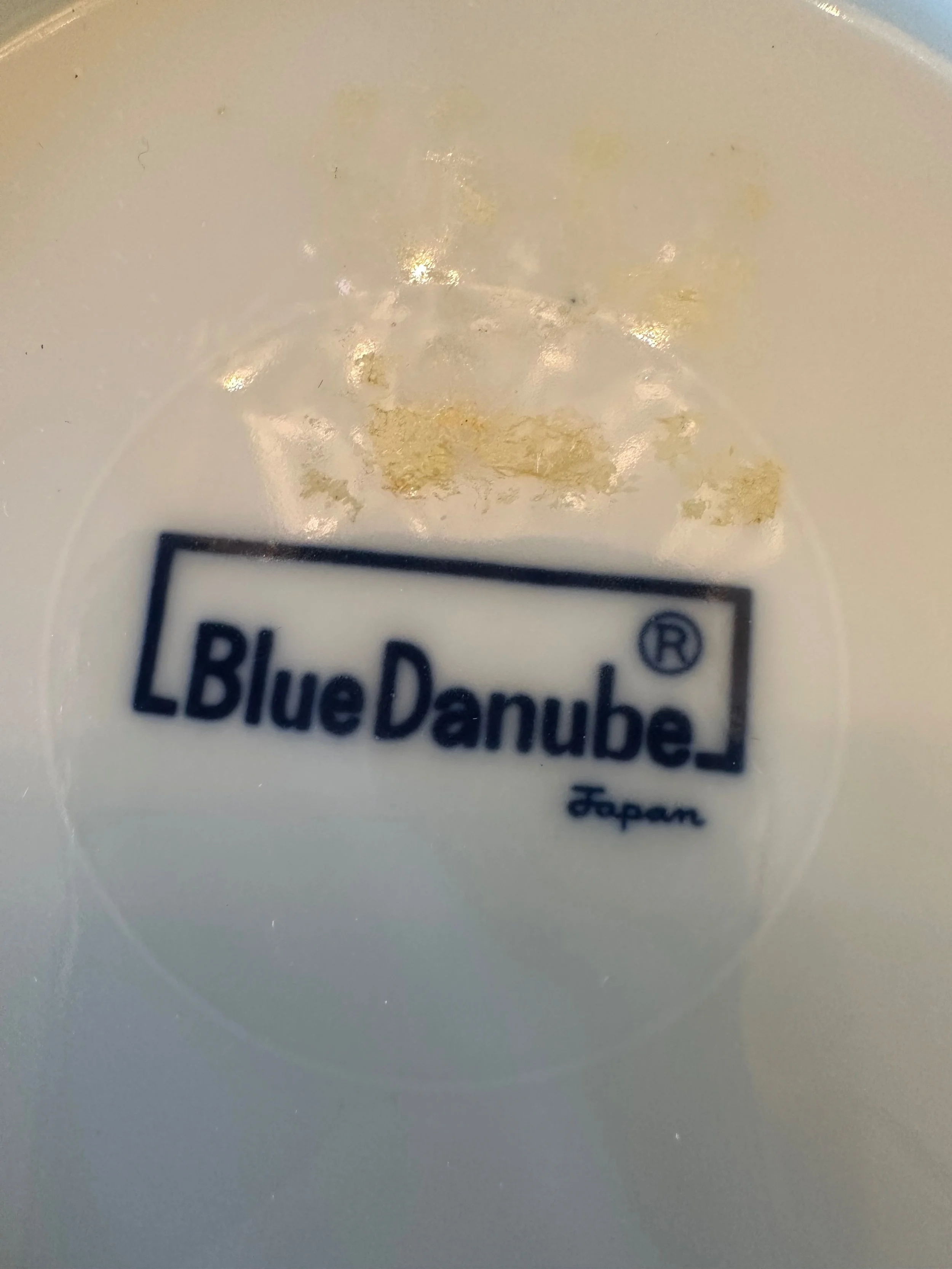Dating Blue Danube with Back-stamps
Understanding Blue Danube China Backstamps: A Collector’s Guide
Few patterns evoke the charm of classic blue-and-white tableware like Blue Danube, the elegant Japanese porcelain inspired by Meissen's Blue Onion design. Known for its vivid cobalt floral motifs, Blue Danube china has graced American homes since the 1950s. But did you know that the backstamp—the logo or mark found on the underside of each piece—can reveal the age and authenticity of your china?
Whether you’re collecting, reselling, or just curious, here’s a helpful guide to the evolution of Blue Danube backstamps, including the distinctive rectangle mark.
🔎 What Is a Backstamp?
A backstamp is the printed or stamped mark on the underside of a china piece. It usually includes the brand name, country of origin, and sometimes a trademark or design number. These marks are especially helpful in identifying when and where your Blue Danube was made.
🏷️ Common Blue Danube Backstamps
Early Script Backstamp (1950s–1970s)
Reads “Blue Danube” in flowing script with “Japan” below.
Sometimes includes “Reg. U.S. Pat. Off.” or a small trademark “®” symbol.
These are among the earliest and most collectible versions.
Rectangle Backstamp (1970s–1990s)
Features a neat rectangle frame with the words:
"Blue Danube®" on the top line
"Japan" on the bottom lineClean, modern, and easy to read—this backstamp is found on later production pieces, including dinnerware and accessories.
Sometimes also includes “Microwave Safe / Dishwasher Safe” wording in even later runs.
🧠 Fun Fact: The rectangle mark helped signal Blue Danube’s transition into everyday use tableware in the 1980s.
Logo-Only or Floral Symbol
Some pieces bear only a stylized BD logo or abstract flower, often on lids, small dishes, or later accessories.
These may lack the name entirely but are still original to the Blue Danube line.
💡 Collector Tips
Always photograph and describe the backstamp when listing for sale.
Rectangle backstamp pieces are popular with replacement buyers looking to match mid-century sets.
Full sets with consistent backstamps are generally more desirable.
Even later Blue Danube pieces retain collector value due to the pattern’s popularity and durability.
💬 Final Thoughts
Blue Danube’s timeless design makes it a favorite across generations—and understanding the backstamp helps you appreciate both its history and value. Whether you’re setting a table or stocking your vintage shop, take a moment to flip those plates and see what story the bottom tells.
✨ About Our Inventory
Many pieces featured on our blog are one-of-a-kind and may sell quickly. We continuously update our collection with similar vintage and fine china.
Have a piece with a rectangle backstamp? Share a photo—we’d love to see which part of the Blue Danube story you hold!
